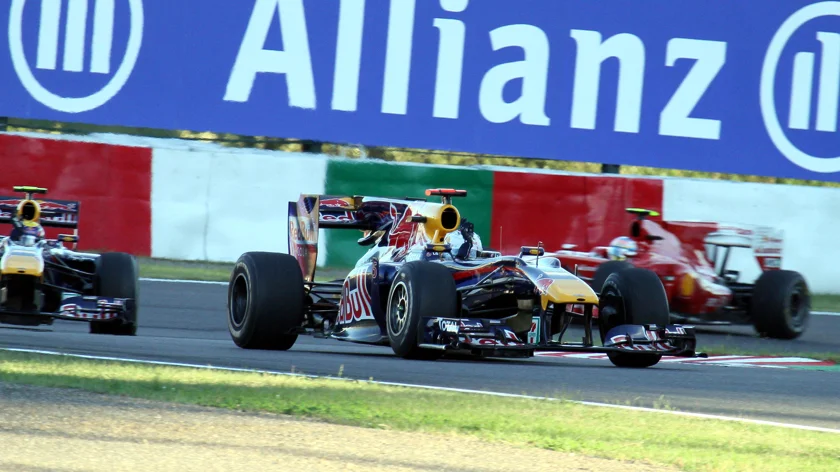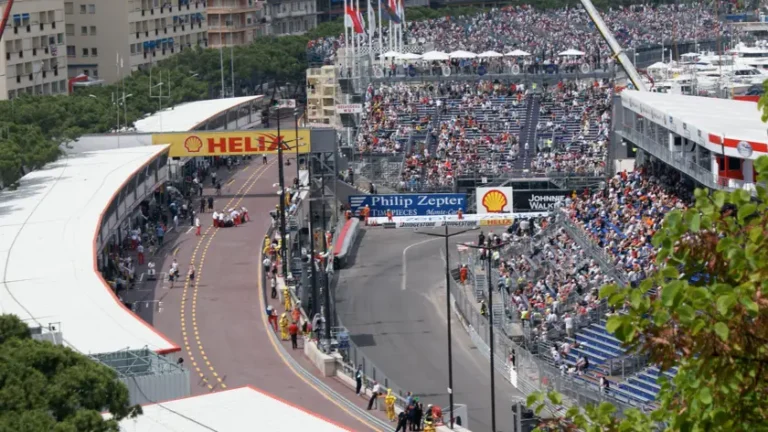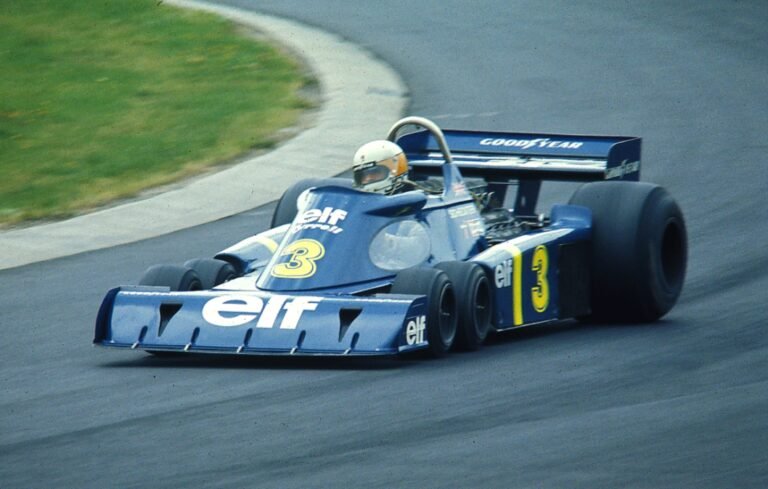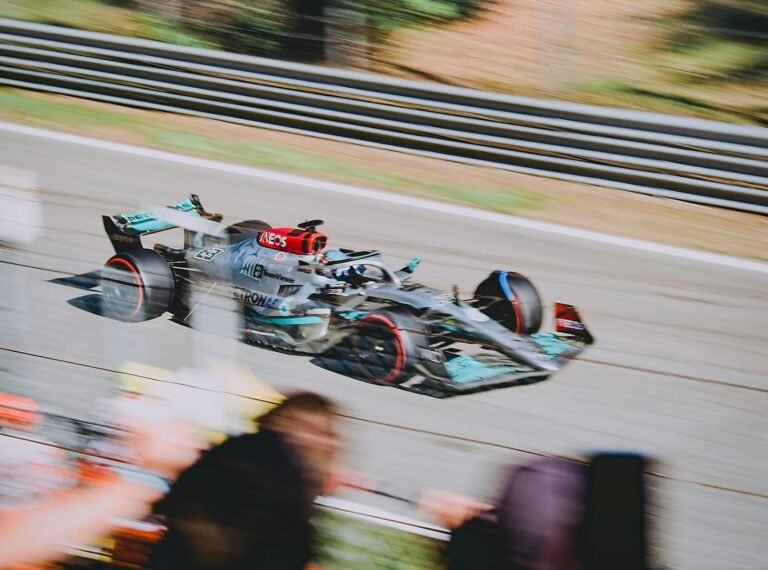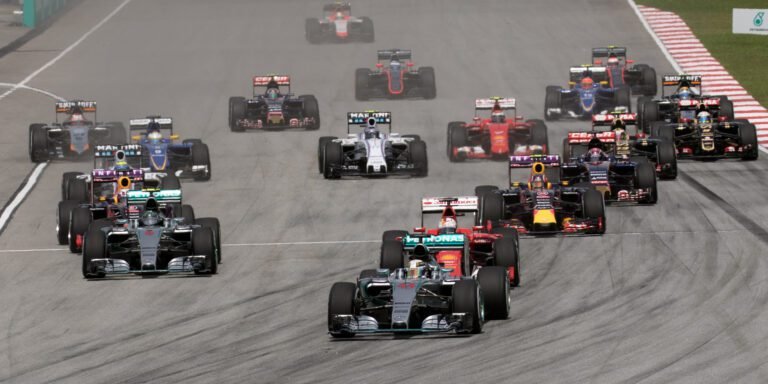F1 Points System 2025: Complete Championship Scoring Guide
Picture by Morio
Table of Contents
The battle for every tenth of a second in Formula 1 extends beyond the checkered flag—each championship point holds the power to decide titles and etch legends into the sport’s history. This definitive guide empowers fans, analysts, and casual observers to understand exactly how F1 points system works—unpacking the Grand Prix distribution, Sprint formats, tie-break procedures, shortened-race protocols, and the sport’s rich points-system evolution.
Few stakes in global sport match the razor-thin margins and season-long intrigue that Formula 1 delivers. In 2025, with the elimination of the fastest-lap bonus and fresh tweaks across race formats, every point—whether from a full-distance Grand Prix or a condensed Sprint race—carries unprecedented weight. This guide will:
- Demystify the flagship 25-18-15-12-10-8-6-4-2-1 Grand Prix scoring system.
- Break down the 8-7-6-5-4-3-2-1 Sprint points distribution for the top eight finishers, including rain-shortened contingencies.
- Chart the historical evolution from 1950’s bonus-laden early seasons to today’s streamlined structure.
By the end, you’ll navigate Formula 1 standings with the confidence of a veteran strategist, whether assessing mid-season swaps, speculating on prize-money impacts, or crafting the next great title decider.
Grand Prix Points Distribution
The pinnacle of F1 competition, the Grand Prix, allocates points to the top ten finishers on a steep, incentive-driven curve: 25 for victory, then 18, 15, 12, 10, 8, 6, 4, 2, and 1 for the remaining Top 10. This system underscores the premium on winning—a 7-point gap between first and second, larger than any other interval, encourages drivers to fight for the top step rather than settle.
In 2025, the removal of the fastest-lap bonus—which previously offered an extra point to the race’s quickest lap setter—reduces the maximum haul per weekend from 26 to 25. Additionally, the 24-round calendar places a premium on consistency: one DNF can no longer be offset by a fastest-lap consolation.
The yawning 7-point differential between first and second not only prioritizes victory but has proven decisive in recent seasons. In 2022, Max Verstappen’s championship dominance exemplified this—despite suffering early reliability issues that left him 46 points behind Charles Leclerc after three races, Verstappen’s 15 wins throughout the season, combined with Ferrari’s strategic errors and technical failures, resulted in a commanding 146-point championship margin. Conversely, the 3-point gap between second and third fosters fierce internal team battles for the runner-up slot, often determining Constructors’ standings.
Gaps tighten further down the order—3 points between second and third, then 3 again to fourth, followed by 2 and 1-point intervals. These smaller slices ensure that midfield skirmishes retain value: a sixth-place finish over seventh yields 2 extra points, a margin that can decide who avoids relegation from the top half of the table.
Given the new regulations, teams must optimize strategies around tire management and pit-stop windows, trading potential one-point gains in the lower points for reliability.
Points Distribution Table
Sprint Race Points & Format
Introduced in 2021 and expanded in scope by 2024, Sprint races have become a weekend staple. In these 100km “mini-Grand Prix,” the top eight earn points (8-7-6-5-4-3-2-1), rewarding aggressive overtaking while retaining risk management.
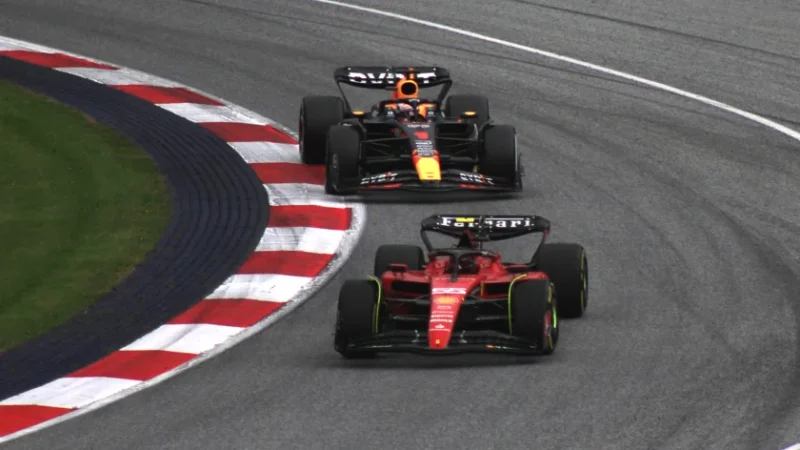
Sprint weekends shake up traditional setups—Friday qualifying sets the grid order for the Sprint, and the Sprint finishing order then determines the grid for the Grand Prix. Teams juggle fresh-engine allocations and tyre allocations—banking 7 points for a P2 Sprint finish might be more appealing than a risky midfield fight that compromises Sunday performance.
Sprint qualifying is now conducted as a dedicated Sprint Shootout session comprising three knockout segments—SQ1 (12 minutes), SQ2 (10 minutes), and SQ3 (8 minutes)—replacing the standard Friday qualifying to determine the Sprint grid.
Shortened Race Points Protocol
When weather or incidents truncate a race before full distance is achieved, F1 applies a tiered points system to preserve fairness. Races awarding less than two green-flag laps earn no points; otherwise, points scale by completion percentage:
- 2–25% completed: top five only (6-4-3-2-1).
- 25–50%: top nine (13-10-8-6-5-4-3-2-1).
- 50–75%: top ten with reduced table (19-14-12-10-8-6-4-3-2-1).
- 75%+: full points (25-18-…-1).
F1 Shortened Race Points Protocol – Tiered system based on completion percentage
The 2021 Belgian Grand Prix—stopped after two laps behind the safety car—sparked controversy by awarding half points to classified finishers, igniting calls for clearer regulations.
Note: No points if a race ends under red flag before two laps under green. This ensures that abbreviated events do not unfairly inflate championship tallies.
Tie-Breaker Procedures
Championships decided by equal points invoke countback rules to award titles fairly. The hierarchy proceeds:
- Number of race wins
- Number of second-place finishes
- Third-place finishes, and so on down the order
- Best result in the final race if all positions tally equally
This approach first rewards outright victories, aligning with F1’s ethos that winning matters most. By prioritizing wins, the FIA ensures aggressive racing is incentivized.
If podium counts match, the countback evaluates fourths, fifths, etc. In the rare case all position tallies align, the result in the season’s finale acts as the ultimate decider. This ensures a conclusive climax, as demonstrated in junior series but yet unused at F1’s top tier.
Historical Evolution of the F1 Points System
The Formula 1 points system has evolved dramatically to balance rewarding victory with fostering competitive fields.
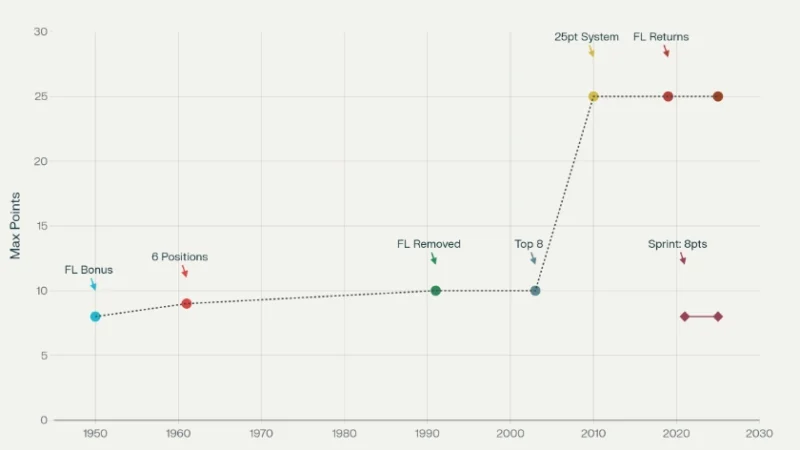
Origins (1950–1960)
The inaugural 1950 championship awarded 8-6-4-3-2 points to the first five finishers, plus a point for fastest lap, encouraging both speed and reliability. Juan Manuel Fangio’s era highlighted the dual pursuit of outright pace and consistent finishes.
Expansion and tiers (1960s–1970s)
As grids grew, the system shifted to 9-6-4-3-2, then introduced points for sixth place (1 point), reflecting deeper competition. The retained fastest-lap bonus ensured continued incentive for late-race aggression.
Standardization and growth (1980s–1990s)
By 1991, the tally moved to 10-6-4-3-2-1 for the top six, stripping the fastest-lap point to simplify standings. This era’s extended calendars spurred reconsideration of point depth, but the system remained stable for over a decade, cementing driver strategies around podium finishes.
Modern overhaul (2003–2010)
A major shake-up in 2003 expanded points to the top eight (10-8-6-5-4-3-2-1), reducing gaps to promote midfield battles. In 2010, the ten-point winner reward escalated to 25 points across the top ten, crafting the current, steep curve that sharply distinguishes victory. This change responded to vastly larger race calendars and sought to preserve value per event.
Sprint introduction (2021–2025)
Sprint races inserted a fresh layer of complexity, offering points to the top eight finishers during selected weekends. These mini-races aimed to enhance Saturday’s spectacle and diversify championship scenarios.
Recent tweak (2025)
Elimination of the fastest-lap bonus point cements the pure rank-based system. Combined with shortened-race brackets and clearly codified tie-break rules, the 2025 structure represents F1’s most streamlined and transparent scoring framework yet.
F1 points system comparison: Indycar, NASCAR & Endurance racing
F1’s point system stands out among major motorsport series for its simplicity and victory emphasis, contrasting sharply with more complex formats that prioritize different strategic elements.
IndyCar awards substantially higher raw points—50 for victory versus F1’s 25—while extending scoring to nearly the entire field (positions 1-33). More critically, IndyCar incorporates multiple bonus opportunities: one point for pole position, one for leading any lap, and two extra points for leading the most laps. This creates scenarios where a dominant race winner can accumulate up to 54 points versus F1’s fixed 25, rewarding both speed and tactical prowess.
NASCAR employs the most intricate system, dividing races into stages where the top ten finishers in each stage earn 10-1 points. Combined with 40 points for race victory and additional playoff points for stage wins, NASCAR’s format can yield over 60 points per event for exceptional performances. The stage system encourages aggressive racing throughout entire events rather than late-race sprints, though critics argue it artificially fragments race narratives.
In endurance racing, the FIA World Endurance Championship doubles its points at the 24 Hours of Le Mans relative to other rounds, underscoring the marquee event’s prestige, while the IMSA WeatherTech SportsCar Championship uses a uniform points structure across its endurance rounds and additionally crowns Michelin Endurance Cup champions based on points scored at split segments within the longest events.
F1’s approach prioritizes clarity and championship narrative coherence. While IndyCar’s bonuses reward pure pace and NASCAR’s stages maintain engagement, F1’s streamlined method ensures that race finishing order directly translates to championship implications without mathematical complexity. This philosophy aligns with F1’s brand as the pinnacle of motorsport—where victory, not gamesmanship, determines World Champions.
The trade-off becomes evident in championship battles: IndyCar’s system can see dramatic point swings from bonus accumulation, while F1’s requires sustained excellence across race weekends. Neither approach is inherently superior, but F1’s method reflects its emphasis on technical mastery and strategic precision over entertainment-driven variability.
Rule Change Rationale & Proposals
The elimination of F1’s fastest-lap bonus point for 2025 stems directly from controversial manipulation during the 2024 Singapore Grand Prix, where strategic interference undermined competitive integrity.
The Singapore controversy epitomized the rule’s fundamental flaw: Daniel Ricciardo, running 18th for RB (Red Bull’s sister team), pitted for fresh tires in the final laps to steal the fastest-lap point from McLaren’s Lando Norris. Ricciardo openly admitted the move was made “with a little bit of Red Bull in mind,” helping championship rival Max Verstappen by denying Norris a crucial point. This strategic manipulation—where a non-scoring driver influenced title contenders—highlighted how the rule rewarded political maneuvering over sporting merit.
FIA’s official explanation confirmed that “with the bonus sometimes proving a controversial topic, the decision was taken to remove it”, acknowledging that teams routinely exploited drivers outside the top ten to deny competitors points. The rule’s original intent—encouraging late-race aggression—had devolved into calculated interference that contradicted F1’s competitive principles.
Rejected expansion proposals reveal deeper structural considerations. The F1 Commission unanimously rejected extending points to 12th place after initially considering positions as low as 14th. The reversal occurred because midfield competitiveness improved significantly through 2024—teams like RB and Haas consistently outperformed struggling Aston Martin, creating more opportunities for lower-ranked teams to score under the existing top-10 system.
| Pros | Cons |
|---|---|
| Greater reward for midfield battles, reduced financial gaps between teams, more strategic variety | Diluted victory value, complexity in championship calculations, potential devaluation of points currency |
| Clear hierarchy, championship narrative coherence, established precedent | Limited scoring opportunities for bottom-half teams, financial disadvantage amplification |
The FIA’s decisions reflect a philosophy prioritizing competitive purity over entertainment manipulation—maintaining points as rewards for genuine achievement rather than strategic gaming.
Mid-Season Transfers & Point Allocation
When F1 drivers switch teams mid-season, driver championship points follow the individual while constructor points remain with the original team, creating distinct accountability systems that prevent gaming while maintaining competitive fairness.
This dual-tracking system ensures that driver achievements are never lost or transferred, regardless of contractual changes. For example, if a driver accumulates 50 points with Team A before switching to Team B, those 50 points remain part of their season total for drivers’ championship calculations. Conversely, Team A retains those 50 points in the constructors’ standings, while Team B only benefits from points scored by their new driver after the transfer date.
No penalties apply to mid-season transfers—the regulations impose no point deductions or restrictions on either drivers or teams making strategic personnel changes. This policy encourages performance-based decisions rather than artificial contractual locks, aligning with F1’s meritocratic principles where underperforming drivers face replacement risks year-round.
Historical precedents demonstrate the system’s effectiveness: Red Bull’s two-team structure has facilitated numerous mid-season swaps. Max Verstappen’s 2016 promotion from Toro Rosso to Red Bull—where he immediately won his debut race—exemplifies how the system rewards talent while preserving championship integrity. Similarly, Alexander Albon’s 2019 swap with Pierre Gasly showcased strategic flexibility without disrupting point calculations.
2025 case study considerations: While no major mid-season transfers occurred in 2025’s early rounds, the system’s structure remains crucial for teams managing driver performance. Should a constructor need to replace an underperforming driver, they sacrifice future points accumulation from that seat but retain historical contributions. The driver, meanwhile, carries their season total to their new team, maintaining personal championship relevance.
Component allocation adds complexity: engine penalties and technical components stay with the car number, not the driver, preventing teams from cycling drivers to refresh component allocations. This rule prevents potential abuse where teams might rotate drivers solely to gain technical advantages, ensuring that point transfers reflect genuine competitive merit rather than regulatory manipulation.
Championship Stakes & Financial Impact
Every position in the constructors’ championship carries enormous financial consequences, with prize money distribution creating gaps exceeding $90 million between first and tenth place, fundamentally shaping team strategies and long-term viability.
The 2024 prize pool distributed approximately $1.266 billion across all teams, with McLaren earning an estimated $161 million for their constructors’ title while last-placed Sauber received $69 million. This $92 million gap between champion and last place exceeds many teams’ entire operational budgets, creating powerful incentives for sustained performance.
F1 Championship Prize Money Stakes – $92M gap between 1st and 10th
Prize money allocation follows a complex three-tier structure: 75% distributed by championship position, 20% through historical success bonuses, and 5% through Ferrari’s special heritage payment. The position-based component alone shows approximately 0.9% difference between each place—translating to roughly $8.5 million per position. This means that a single point separating sixth from seventh place in the final standings could cost a team nearly $10 million.
Financial implications extend beyond prize money: constructors’ standings determine commercial rights revenue shares, paddock allocation priorities, and voting weights in F1’s governance structure. Teams finishing higher receive preferential treatment in FIA meetings, enhanced hospitality allocations, and greater influence over rule changes that affect future competitiveness.
Staff bonuses and operational impacts cascade through entire organizations. Prize money often funds performance bonuses for hundreds of employees, facility upgrades, and next season’s development budgets. Teams finishing in the points typically reinvest winnings into aerodynamic development, simulator technology, and personnel retention—creating positive feedback loops where success enables future success.
The cost cap regulation adds another dimension: while teams are limited to $140 million in development spending, prize money provides crucial funding for infrastructure, non-capped activities, and financial stability. Even mid-table teams like Aston Martin received approximately $120 million—about 86% of the cost cap—in prize money during strong seasons, effectively subsidizing much of their competitive program.
This financial architecture explains why teams fight desperately for every championship point—a single position swing can determine whether they operate as profitable enterprises or struggle with budgetary constraints throughout the following season.
Conclusion
The 2025 F1 points system distills championship scoring into a clear, compelling hierarchy: victory reigns supreme, with strategic depth across Grand Prix, Sprint, shortened-race scenarios, and tie-break countbacks. Removing the fastest-lap bonus sharpens focus on race position, while robust countback rules and historically evolved brackets ensure fairness.
Whether you’re a fan or a beginner analyst, you can now assess standings with confidence—every strategic overtake, pit-stop gambit, and podium finish resonates through this finely-tuned points architecture. As the season unfolds, watch how teams leverage these rules to craft title-winning campaigns, where a solitary point can become the difference between champion and runner-up.
FAQs
Can all classified finishers earn points in Formula 1?
Only the top 10 classified finishers score points in F1; proposals to extend scoring beyond 10th place were rejected by the F1 Commission in 2024.
Why does F1 use such a large gap between 1st and 2nd place?
The 7-point difference between first (25) and second (18) places is designed to reward victories over consistent podiums, ensuring championships favor race wins.

